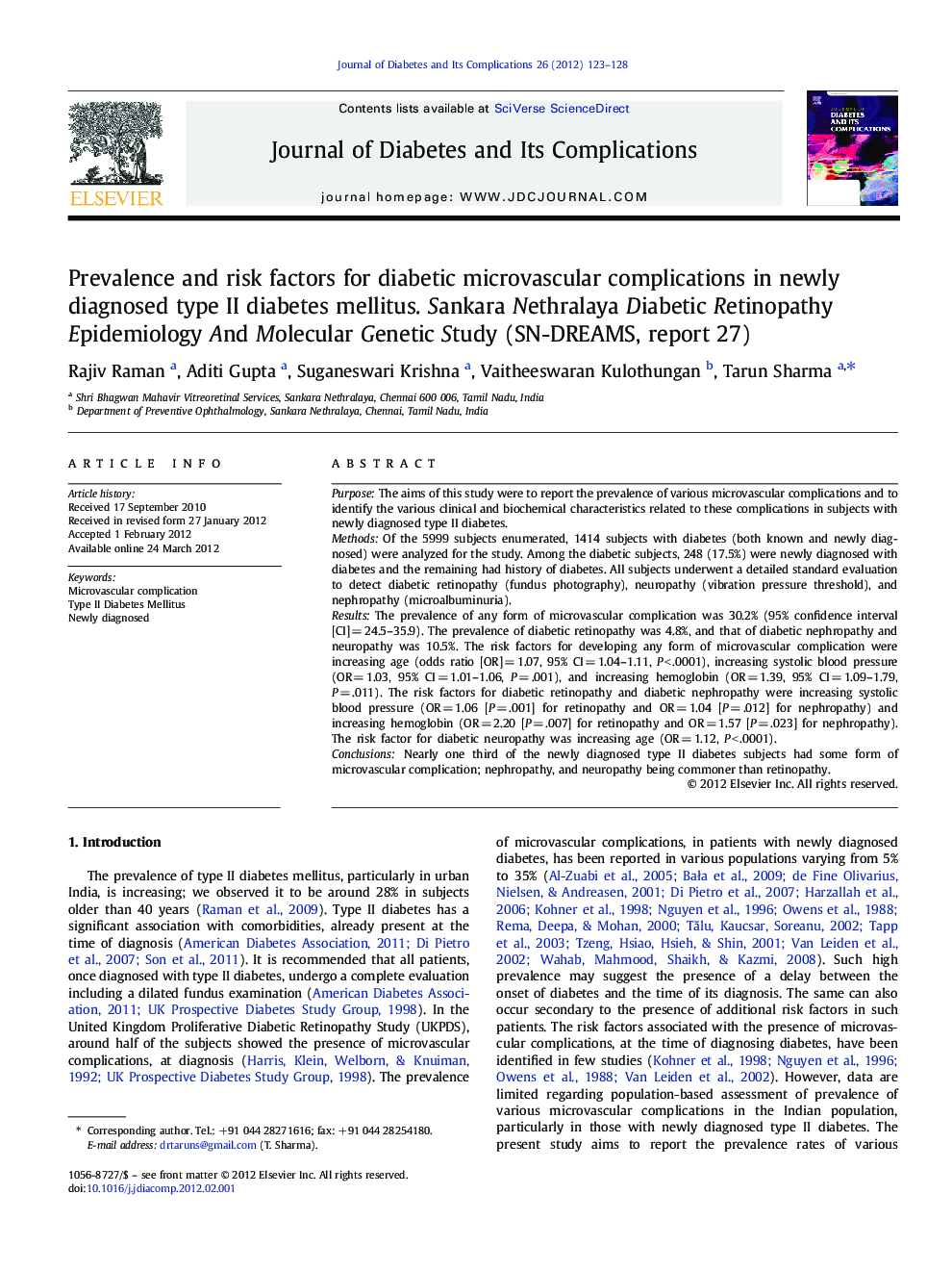| Article ID | Journal | Published Year | Pages | File Type |
|---|---|---|---|---|
| 2804547 | Journal of Diabetes and its Complications | 2012 | 6 Pages |
PurposeThe aims of this study were to report the prevalence of various microvascular complications and to identify the various clinical and biochemical characteristics related to these complications in subjects with newly diagnosed type II diabetes.MethodsOf the 5999 subjects enumerated, 1414 subjects with diabetes (both known and newly diagnosed) were analyzed for the study. Among the diabetic subjects, 248 (17.5%) were newly diagnosed with diabetes and the remaining had history of diabetes. All subjects underwent a detailed standard evaluation to detect diabetic retinopathy (fundus photography), neuropathy (vibration pressure threshold), and nephropathy (microalbuminuria).ResultsThe prevalence of any form of microvascular complication was 30.2% (95% confidence interval [CI] = 24.5–35.9). The prevalence of diabetic retinopathy was 4.8%, and that of diabetic nephropathy and neuropathy was 10.5%. The risk factors for developing any form of microvascular complication were increasing age (odds ratio [OR] = 1.07, 95% CI = 1.04–1.11, P < .0001), increasing systolic blood pressure (OR = 1.03, 95% CI = 1.01–1.06, P = .001), and increasing hemoglobin (OR = 1.39, 95% CI = 1.09–1.79, P = .011). The risk factors for diabetic retinopathy and diabetic nephropathy were increasing systolic blood pressure (OR = 1.06 [P = .001] for retinopathy and OR = 1.04 [P = .012] for nephropathy) and increasing hemoglobin (OR = 2.20 [P = .007] for retinopathy and OR = 1.57 [P = .023] for nephropathy). The risk factor for diabetic neuropathy was increasing age (OR = 1.12, P < .0001).ConclusionsNearly one third of the newly diagnosed type II diabetes subjects had some form of microvascular complication; nephropathy, and neuropathy being commoner than retinopathy.
